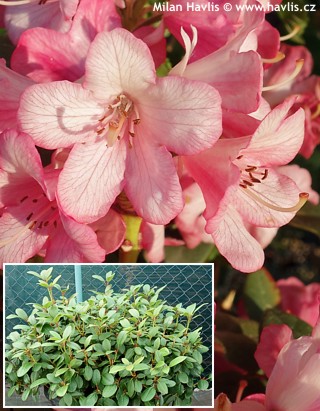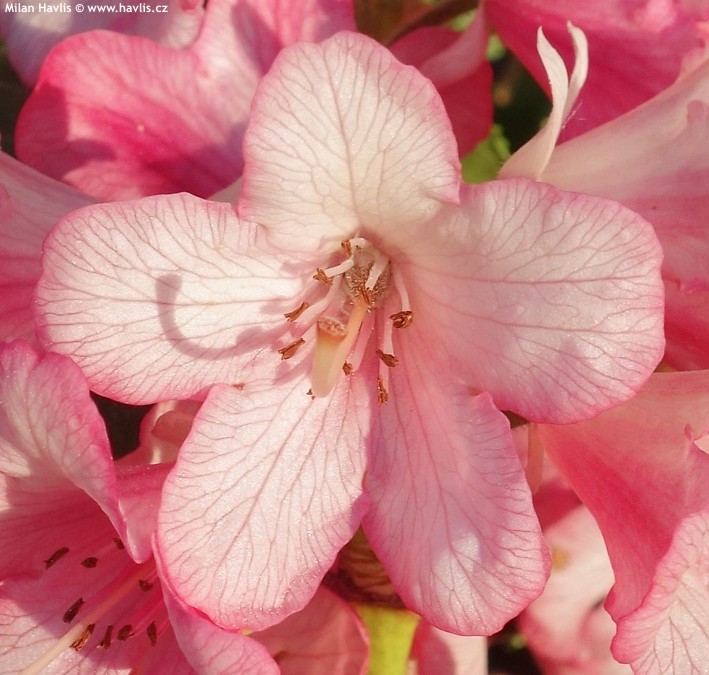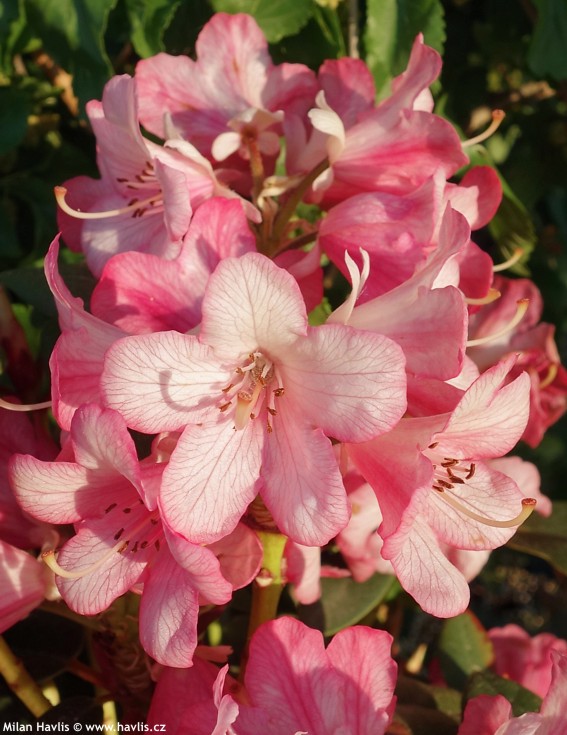Rhododendron 'KONTIKI' rhododendron
size/type
medium-sized shrub,medium-sized shrub
usual height
0,5-1m
usual width
1,3-1,5m
leaves
evergreen broadleaf
colour of leaves
flowers
showy
colour of flowers
blooming time
April-May
location
semi-shade to shade
USDA zone (lowest)
7 (down to -23°C)
winter protection
for zone 5+6

for zone 7

categorized
Rhododendron
Rhododendrons are reliable, beautifully flowering, evergreen shrubs of variable origin: S.W. China, Himalayas, Northern America, and even Europe. The original species were hybridized several times for better performance so in the 1950´s there were more than 10,000 cultivars registered, and the number keeps increasing.Description of the plant:
Kontiki is another fascinating multiple rhododendron hybrid, in this case a cross of two Chinese species with campanulate flowers (r.haematodes and r.williamsianum), and one elepidote (large-leaved) cultivar (Mars). The result is so unusual and beautiful that the breeder himself must have gasped for air when he saw its first flowers for the first time (Hans Hachmann, 1988).Flowers of Kontiki rhododendron are gentle yet conspicuous. They open from rich pink buds into medium pink colour with a network of rich pink veins all over. The are broadly bell-shaped with 5 petals distinctly divided into an almost meadow flower appearance. Looking up close you can see them glitter as if sprayed with a metallic paint. Blooming begins in late April and continues for 2-3 weeks.
Evergreen leaves confirm their Chinese origin - they are rather rounded to oval, dark olive green, smooth and slightly glossy, and arranged almost uniformly horizontally in a perfect way that you cannot see the ground through them. Kontiki forms a compact, dense, mounding shrub, and prefers a location sheltered from strong winter and early spring sunlight.
For a better looking shrub dead-head where possible. The roots are shallow, spreading to sides in search for nutrients. Never plant them too deep. The soil has to be acidic (pH 4.5-5.5), rich in humus, cool and always moist. Ideal soil mixture is peat with lime-free, light garden soil topped with leave-mould. Hardiness confirmed to -23°C (USDA zone 6) and expected to sink to -27°C.
Last update 05-12-2018
QUICK PRICE OVERVIEW
CURRENTLY SOLD OUT
















